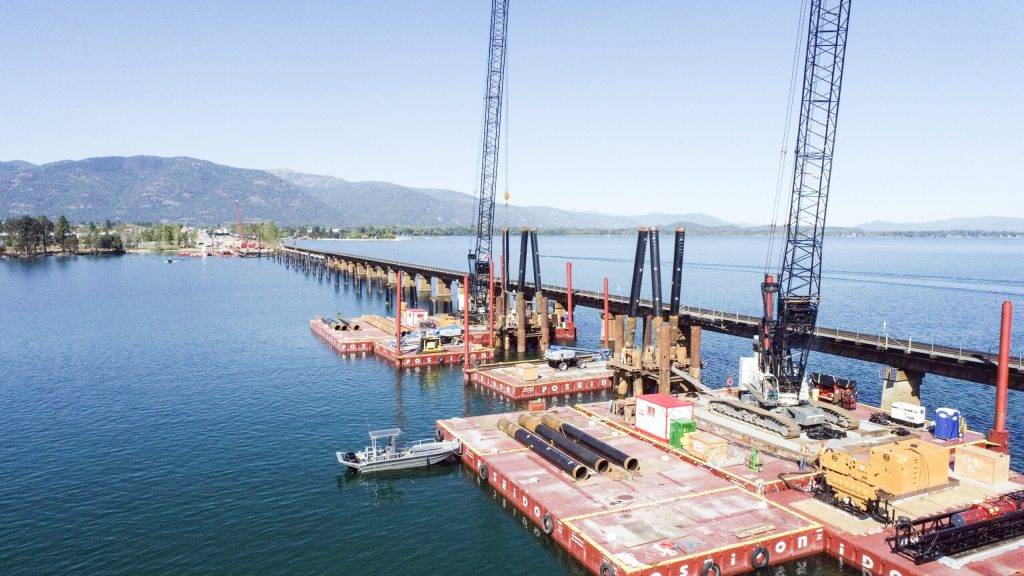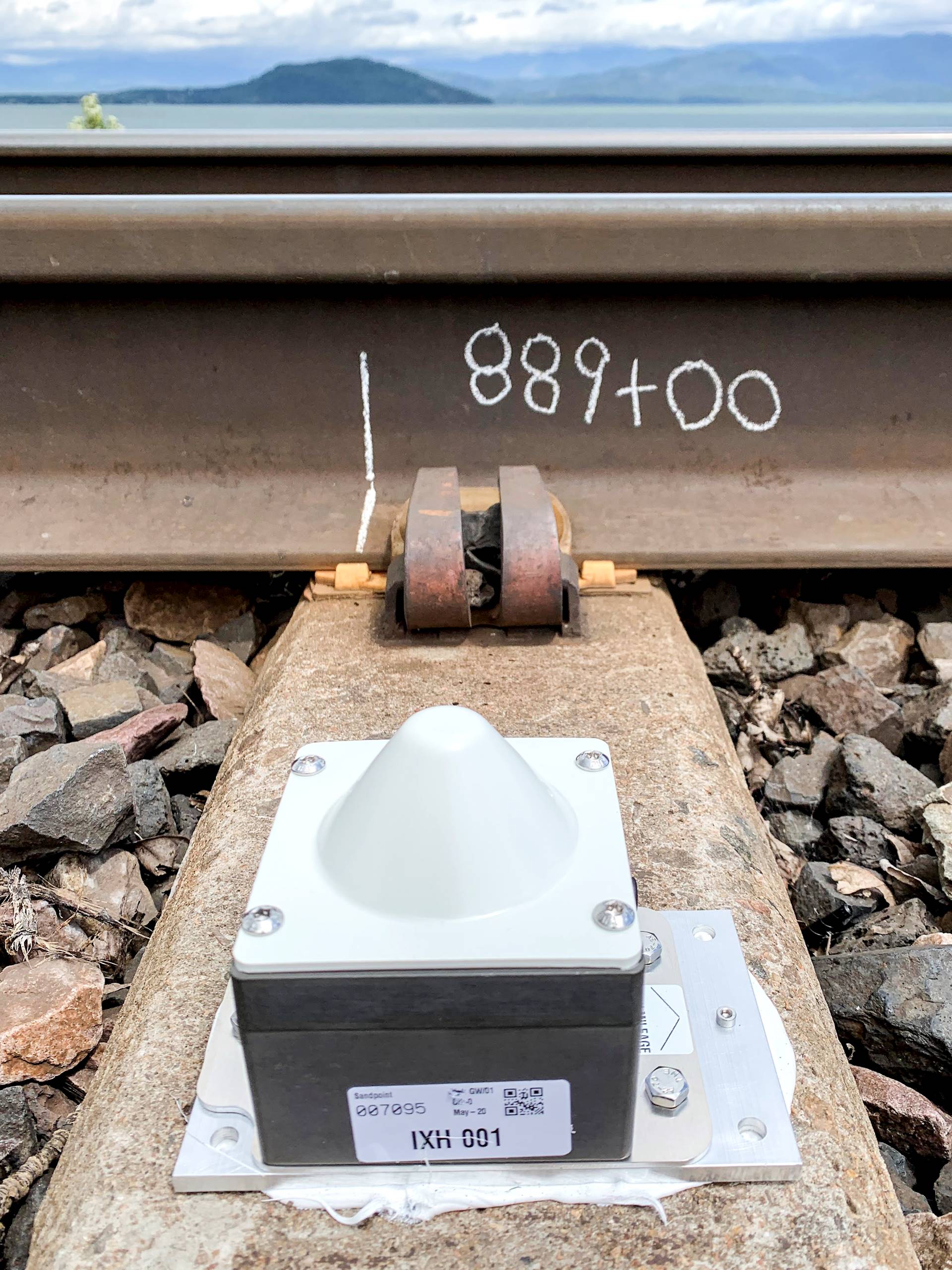
When construction projects happen close to an active railroad mainline, there is frequently a heightened concern regarding how the construction may affect the track’s integrity. This is especially true when the work involves boring and jacking a pipe through and under a railroad embankment or building a bridge adjacent to the active track. In these cases, it is critical to know that the mainline’s integrity is intact and it is safe to continue running trains.
This was the case for a major railroad when it was planning how to monitor its track during the construction of a new parallel bridge spanning over 4,000 feet across a lake. The railroad wanted to monitor the top of rail frequently enough to quickly identify any changes that could impact traffic. Typical assessments are done with visual inspections and geometry car analysis and include values related to cross-level, twist and dip to determine the viability of the track surface.
Usually this would fall to conventional survey crews to collect data on a set schedule, then process and compare that information to historical positions to tell if the construction is moving the track. However, this construction is expected to span three years. Considering the sheer magnitude of the site and a very heavy traffic corridor, deploying a survey team to monitor the entire bridge on a set schedule would have been impractical and incredibly expensive.
 Triaxial sensors placed on the active track capture data to monitor displacement while a new, parallel rail bridge is constructed across a lake.
Triaxial sensors placed on the active track capture data to monitor displacement while a new, parallel rail bridge is constructed across a lake.Tilt and vibration sensors can be placed on the structure to monitor movement; however, these typically monitor the X and Y directions, and translating that movement to the running surface would require detailed measurements and calculations on all the readings.
Working with the railroad, the Hanson team proposed and implemented a high-tech solution to this problem: a system that uses triaxial sensors placed at regular intervals directly on the rail ties. The tilt information (along with other variables) is streamed via a radio mesh network in the sensors to cellular data gateways that transmit this raw information to the internet. This data is processed on the sensor vendor’s servers and converted to actual displacement values for the three variables that are monitored for track geometry.
In addition, Hanson developed a webpage that pulls the information through an application programming interface and assigns each displacement a performance condition of red, yellow or green. If an area moves into high alert (red), emails about the displacement are sent to the appropriate individuals. All of this happens in 15-minute intervals, and data is collected around the clock.
Technology like this enables railroads to quickly and accurately receive crucial information and save money, compared with traditional methods. For more information on how this solution can serve your needs, contact Matt Schrader at mschrader@hanson-inc.com.